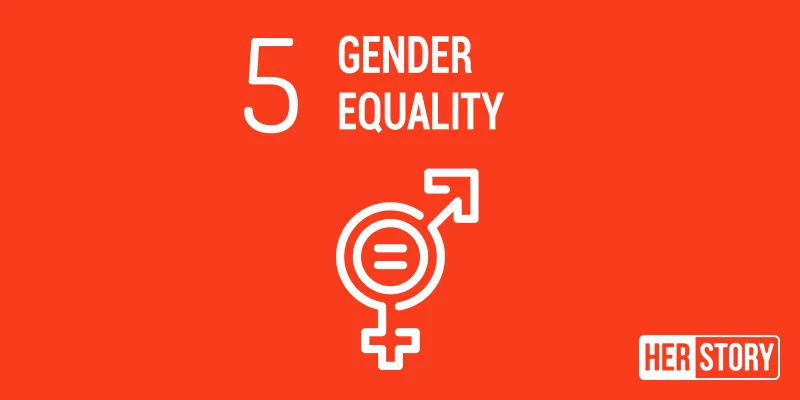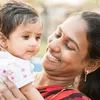Why we need to achieve gender equality to achieve sustainable development goals by 2030
Although many governments and organisations claim to be tackling the gender equality issue, approximately 1.4 billion women and girls are still victims of discrimination, violence, and sexism.
Since the United Nations formulated the Sustainable Development Goals (SDGs) in September 2015, there has been a concerted effort to make each of the 17 goals beneficial and inclusive for all, so that no one is left behind. Equally, there needs to be an inclusive gender balance when it comes to achieving the goals.
The 17 SDGs were conceptualised in 2015 when they were signed by 193-member states to ensure an end to global poverty, reduced inequalities and action against climate change. Integral to the SDGs was a ‘leave no one behind’ ethos to ensure that the goals impact people from all walks of life, in equal measure by the year 2030.

This ethos should ensure inclusivity, especially for women and girls who have been marginalised across countries and communities.
Therefore, it is important to recognise, that by achieving SDG 5, that being gender equality, these goals will be turned into actions and solutions, which will be paramount in addressing women’s and girls’ rights across the globe.
This will not only be through policies and programmes, but cultural and behavioural change to tackle centuries of discrimination and marginalisation.
In turn, SDG 5 should also be used as a platform to help successfully achieve the rest of the 16 goals. If this goal is not achieved, the rest can so easily fall with it.
Focusing on gender equality
Gender equality is one of the fastest growing and most progressive social movements of the 21st century. Although many governments and organisations claim to be tackling the issue, there are still approximately 1.4 billion women and girls who are still victims of discrimination, violence, and sexism.
This statistic was highlighted by the inaugural Equal Measures 2030 partnership, which was used to measure the set of targets established by the United Nations General Assembly (UNGA) in June.
This found that no country in the world is on course to meet gender equality targets by 2030, which requires the elimination of discrimination and violence against women across all areas of society.
Some of the most pressing concerns rising from the study have been the alarming under-representation of women in government, the gender pay gap and violence towards females. These were among the areas all countries are failing to address as they look to achieve SDG 5 in the build-up to the ‘decade for delivery’ (2020-2030).
Hunger and malnutrition
As an enabler for many of the other goals, the role of SDG 5 is of paramount importance due to its ability to contribute greatly to other social issues.
This is because by empowering women and girls from all walks of life, the multiplier-effects lead to addressing other issues such as an end to poverty (SDG1), an end to hunger (SDG2), and ensuring a quality education for all (SDG4). Women will be able to contribute greatly to many different industries and sectors as well as the economy, which will drive innovation and create several new opportunities. These will help greatly in breaking down numerous barriers, and, if executed correctly, will become the catalyst for transforming the future.
An example of this can be found through a report by the United Nations in collaboration with FAO, IFAD, WHO, UNICEF and WFP. The State of Food Security and Nutrition in the World (SOFI) report attempts to map the progress of Sustainable Development Goal 2- Zero Hunger.
The goal, which aims to address issues pertained to global hunger, achieving food security and improved nutrition, states that all forms of hunger and malnutrition should be eliminated by 2030.
Women's health
According to the report, women are more likely to be hungry than men. This causes severe health issues like anaemia and problems during childbirth. Unhealthy women give birth to unhealthy children, giving rise to a vicious circle of poor health in the population.
Another recent study published in the Journal of Women’s Health stated that period pain causes 20 percent of young girls around the world to miss school. Additionally, it also affects their academics as 41 percent of girls who were a part of the study also reported decreased performance or lowered concentration in classroom due to menstrual cramps. This not only affects SDG 3, Good Health & Wellbeing, but also SDG 4, Quality Education.
The goal for gender equality contains several specific targets governments have pledged to meet. This includes the elimination of all forms of violence, ending female genital mutilation, and criminalising and preventing child marriage.
Although progress has been made in many countries, particularly in Denmark and Scandinavia, the Equal Measures 2030 partnership report has identified that all of the 129 nations are still a long way away from meeting the goal. Sub-Saharan Africa was the poorest performing region, with no country achieving a ‘good’; instead 28 of the 33 were ranked as ‘very poor’ by the study.
For years, India was home to the largest number of the world’s poor with an estimated 73 million people living below the poverty line.
Having recently been overtaken by Nigeria, which has 87 million people living in extreme poverty, India’s massive income divide persists, marginalising a large section of its population. As a part of its socialist scheme, the government has enacted several measures for those living in poverty, including subsidising food, housing, and education among other benefits.
Yet, these measures cannot be fully inclusive, and the economic divide continues to reinforce the gender divide, contributing to higher rates of unemployment and illiteracy among women when compared to men.
Providing women and girls with equal access to education, health care, employment and representation in politics will fuel sustainable economies and benefit societies and humanity at large. Also, to achieve SDG 16, Peace, Justice and strong Institutions, it becomes imperative to ensure that governments are made more accountable for their SDG commitments - emphasising the importance on empowering women in the truest sense.
Sustainable development relies on ending such discrimination as it has been conclusively proven that equal rights for women has led to economic growth. This is a vital factor for all countries, especially those which are considered to be developing nations.
The initiatives launched to fulfil sustainable development goals should be inclusive in the truest sense, creating a level playing field for all sections of the population to enjoy the intended benefits.
The 17 Sustainable Development Goals cover topics from gender equality, education, climate, health, poverty, hunger and more. In November this year, Delhi will play host to the inaugural SDGs Impact Summit, conceptualised by The World We Want and Times Strategic Solutions Limited. With only 10 years left to achieve the SDGs, the high-level international forum will focus on unlocking the innumerable potential of a collaboration between the Global North and South in accelerating action on the SDGs.
(Edited by Rekha Balakrishnan)
(Disclaimer: The views and opinions expressed in this article are those of the author and do not necessarily reflect the views of YourStory.)









